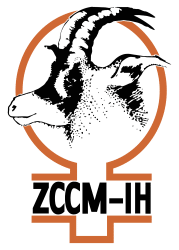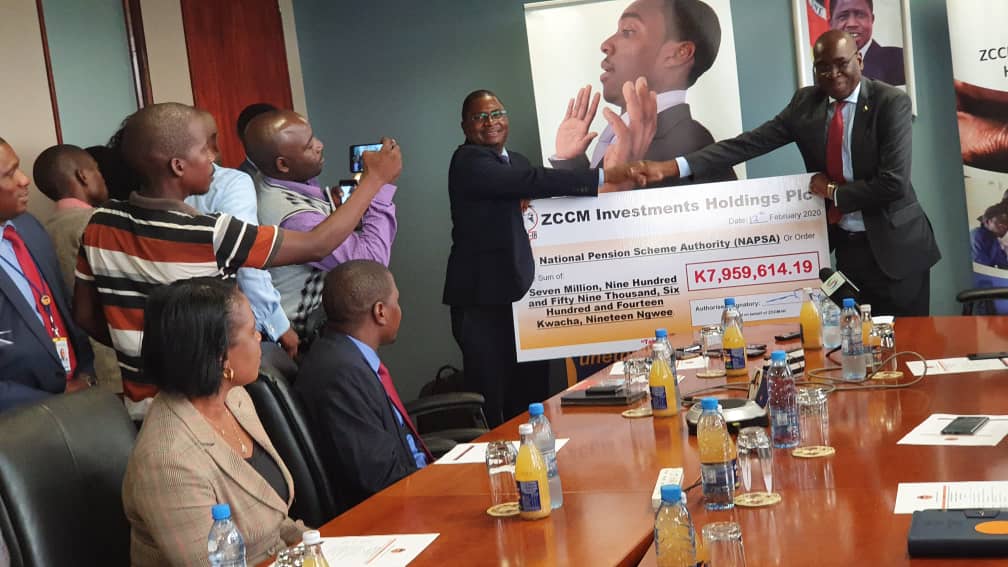FINANCE minister Bwalya Ng’andu says government has shares in too many companies which do not pay out dividends to shareholders.
And ZCCM-IH chief executive officer Mabvuto Chipata says his company has held on to some of the profits made to invest in new projects.
Speaking when ZCCM-IH handed the ministry their fourth cheque for the year ended march 2019, Dr Ng’andu said the government was looking to all companies to start declaring dividends to the treasury.
“It is delightful to receive a dividend cheque from ZCCM-IH this morning and more importantly this marks the fourth year in which the company has continued to pay dividends,” he said.
“This occasion this morning is an occasion which is meant to send a message to all companies within the IDC group of companies to which government has shares in because there should be no too much hullabaloo about receiving dividends from a company because that is what companies do. They are supposed to pay dividends to the shareholders in the normal course of their operations.”
Dr Ng’andu added that, “The fact that we are making so much issue out of this payment simply indicates one thing which is that there are far too many companies within the IDC group of companies in which government has shares which are not paying their dividends.”
He asked companies which did not remit dividends to do so as government wanted returns on its’ investments.
“I want this to go out as a message to all of them that we expect this to be the case. The reason government invests resources in companies is for the companies to ensure that there is an adequate return on investments,” he said.
“Moving forward, we want ZCCM-IH to take a centre stage within the mining area, currently ZCCM-IH invests in a number of mining companies but it’s more of a passive investment but we want the company to go beyond passive investment…we want to see increased participation of the company in the mining sector, in other strategic minerals and taking a centre stage, a more active role.”
Dr Ng’andu said he had tasked ZCCM-IH to help the government make profit from the gold deposits around the country.
“ZCCM-IH has been identified as the anchor company to drive the national gold agenda. We remain optimistic that it will play a critical role in harnessing the gold potential for the benefit of this country. We believe the formation of ZCCM-IH Gold Company Limited in which the government owns 49 per cent of the shares through the Ministry of Finance will see more proactive participation in the investments to be undertaken throughout the gold value chain in the country,” he said.
“Government through the Bank of Zambia has identified the purchase of gold as one of the mechanism to enhance the country’s international reserves apart from the other measures the central bank undertakes to replenish and raise its resources.”
He said he was informed that there were about 21 gold occurrence areas around the country that are to be exploited.
“As a ministry, we will give all the necessary support to the endeavours of ZCCM-IH Gold Company Limited in harnessing the gold potential in the country,” Dr Ng’andu pledged.
He said it was important that state owned companies especially those whose performance was not satisfactory pursue more aggressive reforms and strategies that would turn them to profitability and cease to be a burden on the treasury.
And Chipata said ZCCM-IH had put aside some money to invest in new projects for this financial year.
“Dividends are declared out of profits and if you see between the last financial year and this financial year, the previous year we had a profit of K800,000,000 as a group, this time around we had K448,000,000 but more so, we are looking at new projects,” he said.
“So we have to leave some cash to invest in new projects so in addition to profitability, what determines the amount that you are going to distribute to shareholders, you have to look at the future projects so we have had to leave some cash within the company to invest in new projects with the belief that we have to increase the dividend distribution going forward.”
The government owns 17.3 per cent shares in ZCCM-IH and for the last financial year a cheque worth over K16.8 million was presented to the Ministry of Finance.
Source: The Mast









